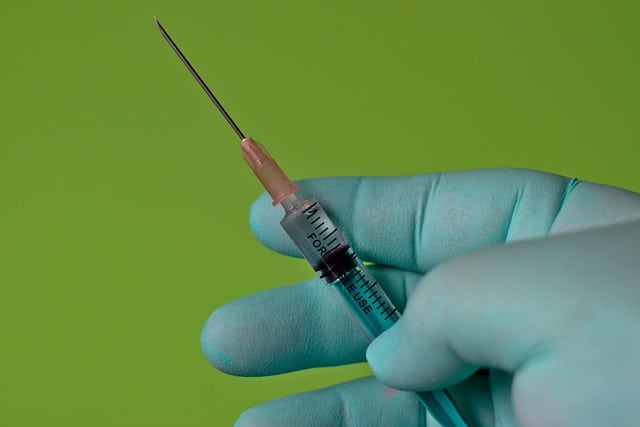
An intramuscular injection allows a drug to go directly into a muscle.
The adjective intramuscular is used in the field of medicine to describe what is located or placed inside a muscle . Muscles, meanwhile, are organs essentially made up of contractile fibers.
It is known as intramuscular injection , in this framework, a route of pharmacological administration through which a medication is injected directly into a muscle . This way of administering drugs is characterized by its speed of action, since the substance is absorbed effectively.
Certain anti-inflammatories , pain relievers , and vaccines are delivered through an intramuscular injection. The application area and the amount of medication provided vary according to the characteristics of each case.
Application of an intramuscular injection
To give an intramuscular injection, the following materials are needed:
* an intramuscular needle , which must have sufficient extension to penetrate the muscle deeply;
* a syringe;
* sterile gauze in 2 x 2 pads;
* a cloth with alcohol;
* a piece of cotton;
* the drug in question.

Syringes are necessary for the application of intramuscular injections.
Necessary precautions
The person in charge of the application must wear gloves to avoid possible infections and must clean the area with cotton or alcohol gauze before the injection. After administering the substance, pressure must be applied with gauze.
Since one of the problems that we must avoid by all means is touching a blood vessel or nerve , before taking the first step we must know in detail the area in which we will apply the intramuscular injection.
Where intramuscular injections are given
The glutes , deltoids and vastus are some of the muscles where intramuscular injections are usually given. Let's see below a series of characteristics of each of the areas in which an injection of this type can be applied:
* thigh : this is a part of the body that is very suitable for injections in children under three years of age or for those who must administer it to themselves. The process consists of dividing the thigh imaginary into three equal parts, and then pricking exactly at the central point;
* hip : recommended for children over seven months or for adults in general. The patient should lie on one side. The nurse should place his or her hand at the point where the buttock and thigh meet, with the thumb pointing toward the groin and the rest of the fingers toward the head. As you move your index finger in the direction it is pointing, you will soon feel the edge of a bone with the pad. The intramuscular injection should be applied to the central point of the triangle formed by the index and major;
* arm : the upper arm muscle is used in patients who have it well developed, meaning that the nurse should be able to notice it easily. This muscle looks like a triangle that has one of its vertices in the armpit area . The injection is applied in the center of it;
* buttocks : not recommended for children under three years of age because they have not yet developed the muscle to a sufficient level. The nurse must uncover the buttock and imagine a line that goes from its bottom to the top of the hip bone. The application should be carried out under the bone, at the top of the buttocks.
Advantages and disadvantages of this administration
Rapid access and speed of absorption are the main advantages of this form of administration. Disadvantages include the possibility of peripheral nerve injury , localized infections, and local fibrosis.
If the intramuscular injection is not applied properly, the patient may suffer severe pain, inflammation, and decreased sensitivity, among other disorders.
